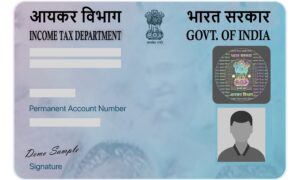Introduction
In today’s digital age, where our lives are increasingly intertwined with technology, safeguarding our online accounts has never been more crucial. With cyber threats lurking around every virtual corner, ensuring the security of our passwords is paramount. Whether it’s for social media, online banking, or email, strong passwords are our first line of defense against malicious actors seeking unauthorized access to our sensitive information. To help you fortify your digital fortress, we’ve compiled a comprehensive guide featuring 10 essential tips for protecting your passwords.
Choose Complex and Unique Passwords
When it comes to password selection, complexity is key. Avoid using easily guessable combinations such as “123456” or “password.” Instead, opt for a mix of uppercase and lowercase letters, numbers, and special characters. Furthermore, refrain from using the same password across multiple accounts. Each login credential should be unique to minimize the risk of a widespread breach if one account is compromised.
Length Matters: Opt for Long Passphrases
While complexity is crucial, the length of your password also plays a significant role in its resilience against brute-force attacks. Consider using passphrases composed of multiple words or phrases strung together. For example, “PurpleElephantDancesUnderStars” is not only easier to remember but also significantly harder to crack compared to shorter, more traditional passwords.
Utilize Two-Factor Authentication (2FA)
Two-factor authentication adds an extra layer of security by requiring users to provide two forms of identification before granting access to an account. This typically involves something you know (e.g., a password) and something you have (e.g., a mobile device). By enabling 2FA whenever possible, you create an additional barrier that enhances the overall security of your accounts.
Regularly Update Your Passwords
The importance of regularly updating your passwords cannot be overstated. Set a reminder to change your passwords periodically, ideally every three to six months. This practice reduces the likelihood of a successful breach by ensuring that any compromised credentials are swiftly replaced with fresh ones.
Beware of Phishing Attempts
Phishing remains one of the most common tactics employed by cybercriminals to steal login credentials. Be wary of unsolicited emails, messages, or links that prompt you to disclose sensitive information. Always verify the legitimacy of the sender before providing any login details, and never click on suspicious links or download attachments from unknown sources.
Secure Your Devices
In addition to safeguarding your passwords, it’s essential to secure the devices you use to access your accounts. Install reputable antivirus software, keep your operating system and applications up to date with the latest security patches, and enable device encryption to protect your data in case of loss or theft.
Store Passwords Securely
Avoid storing passwords in plaintext or unsecured documents. Instead, utilize reputable password management tools that encrypt and store your login credentials in a secure vault. These tools often offer features such as password generation, autofill, and synchronization across devices, making it easier to manage and protect your accounts effectively.
Exercise Caution on Public Wi-Fi Networks
Public Wi-Fi networks present inherent security risks, as they are often unencrypted and susceptible to interception by malicious actors. Exercise caution when connecting to public Wi-Fi hotspots, especially when accessing sensitive accounts or transmitting confidential information. Whenever possible, use a virtual private network (VPN) to encrypt your internet connection and enhance your privacy and security.
Educate Yourself and Others
Knowledge is power when it comes to cybersecurity. Take the time to educate yourself and others about best practices for password security, such as recognizing phishing scams, creating strong passwords, and implementing additional security measures like 2FA. By raising awareness and promoting good habits, we can collectively contribute to a safer online environment for everyone.
Monitor Your Accounts for Suspicious Activity
Stay vigilant by regularly monitoring your accounts for any signs of unauthorized access or suspicious activity. Keep an eye out for unfamiliar login attempts, unexpected changes to account settings, or unauthorized transactions. If you suspect that your account has been compromised, take immediate action by changing your password, revoking access to third-party apps, and notifying the appropriate authorities or service providers.
Conclusion
In conclusion, protecting your passwords is not just a matter of personal security—it’s a fundamental aspect of safeguarding your digital identity and privacy. By implementing these 10 essential tips, you can build a robust defense against cyber threats and enjoy greater peace of mind knowing that your online accounts are secure. Remember, the strength of your digital security starts with the strength of your passwords. Stay vigilant, stay informed, and stay safe in the ever-evolving landscape of cybersecurity.































